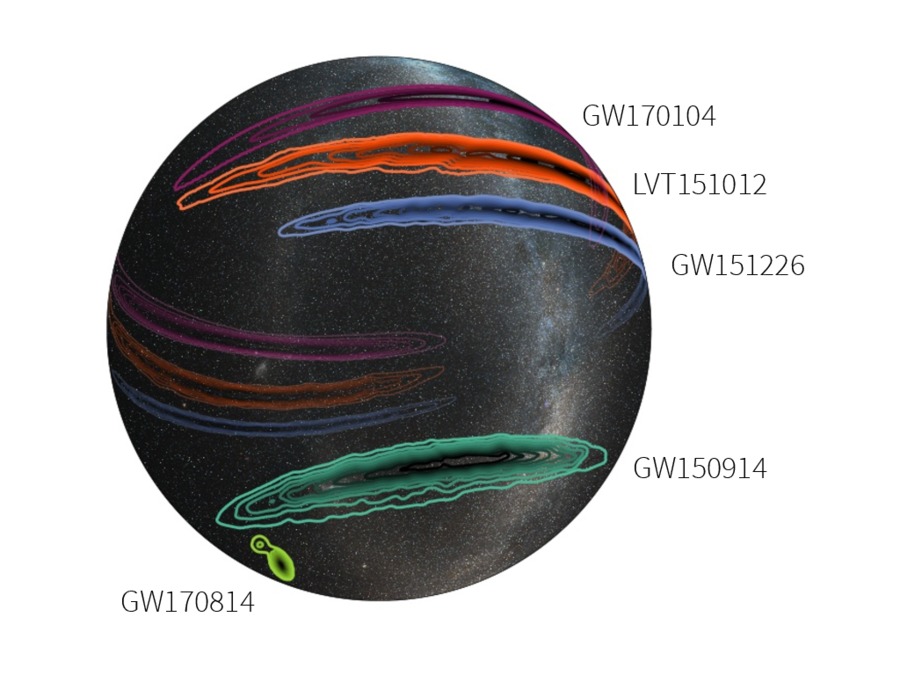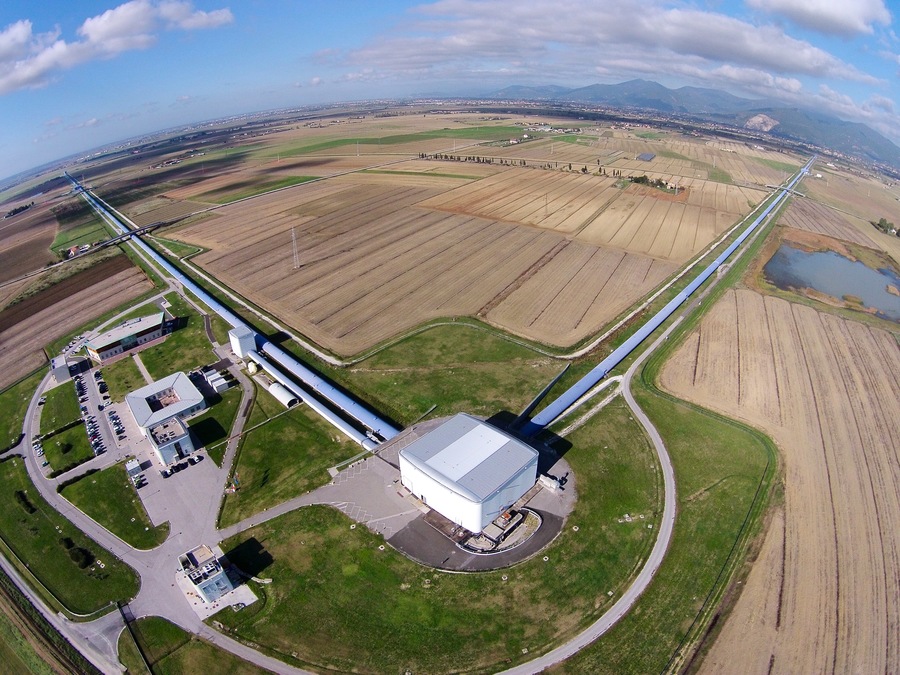Gravitational waves from a binary black hole merger observed by LIGO and Virgo
World science, 28 September 2017
27 September 2017. The LIGO Scientific Collaboration and the Virgo collaboration report the first joint detection of gravitational waves with both the LIGO and Virgo detectors. This is the fourth announced detection of a binary black hole system and the first significant gravitational-wave signal recorded by the Virgo detector, and highlights the scientific potential of a three-detector network of gravitational-wave detectors.
The three-detector observation was made on August 14, 2017 at 10:30:43 UTC. The two Laser Interferometer Gravitational-Wave Observatory (LIGO) detectors, located in Livingston, Louisiana, and Hanford, Washington, and funded by the National Science Foundation (NSF), and the Virgo detector, located near Pisa, Italy, detected a transient gravitational-wave signal produced by the coalescence of two stellar mass black holes.
“As we increase the number of observatories in the international gravitational wave network, we not only improve the source location, but we also recover improved polarization information that provides better information on the orientation of the orbiting objects as well as enabling new tests of Einstein’s theory,” says Fred Raab, LIGO associate director for observatory operations.
Full News Release, September 27, 2017:
https://www.ligo.caltech.edu/news/ligo20170927
 Gravitational wave source areas are mapped across the sky in this graphic. Note how much smaller the GW170814 area is – indicating the higher precision we have in locating the source with three detectors. Credit: LIGO/Caltech/MIT/Leo Singer (Milky Way image: Axel Mellinger)
Gravitational wave source areas are mapped across the sky in this graphic. Note how much smaller the GW170814 area is – indicating the higher precision we have in locating the source with three detectors. Credit: LIGO/Caltech/MIT/Leo Singer (Milky Way image: Axel Mellinger)
 Virgo detector (aerial photo). Credit: The Virgo collaboration/CCO 1.0
Virgo detector (aerial photo). Credit: The Virgo collaboration/CCO 1.0